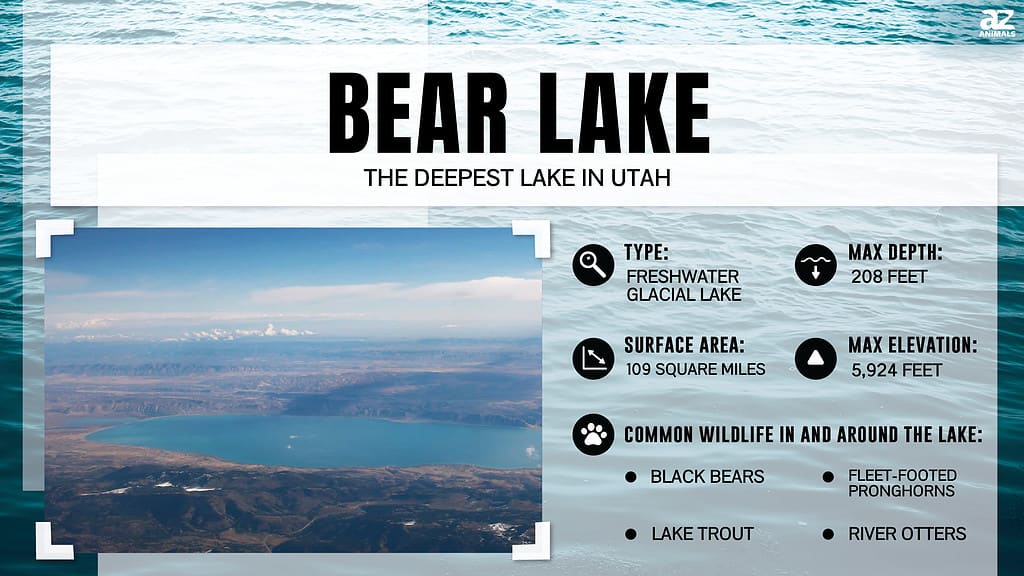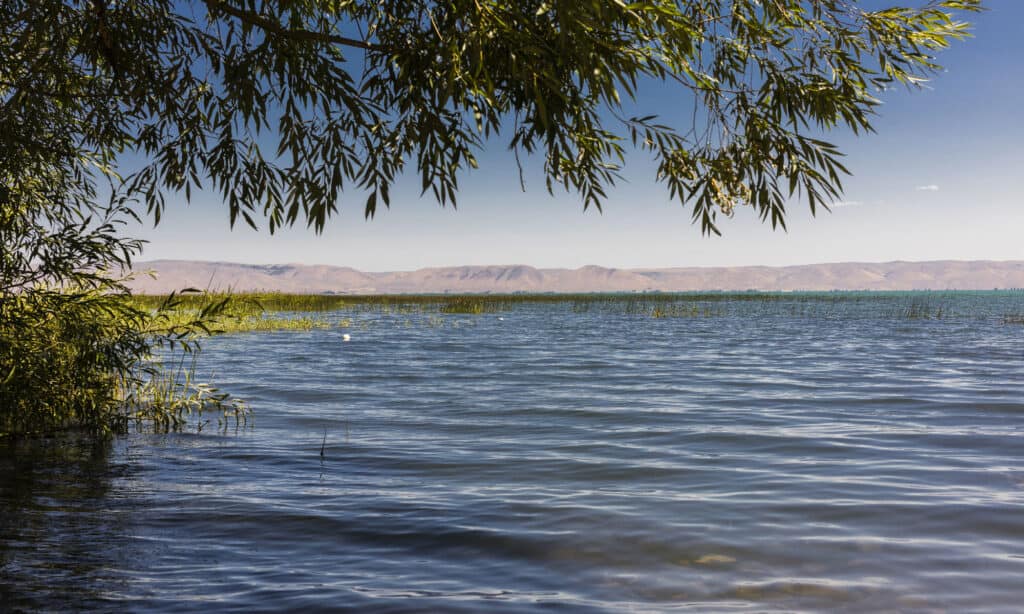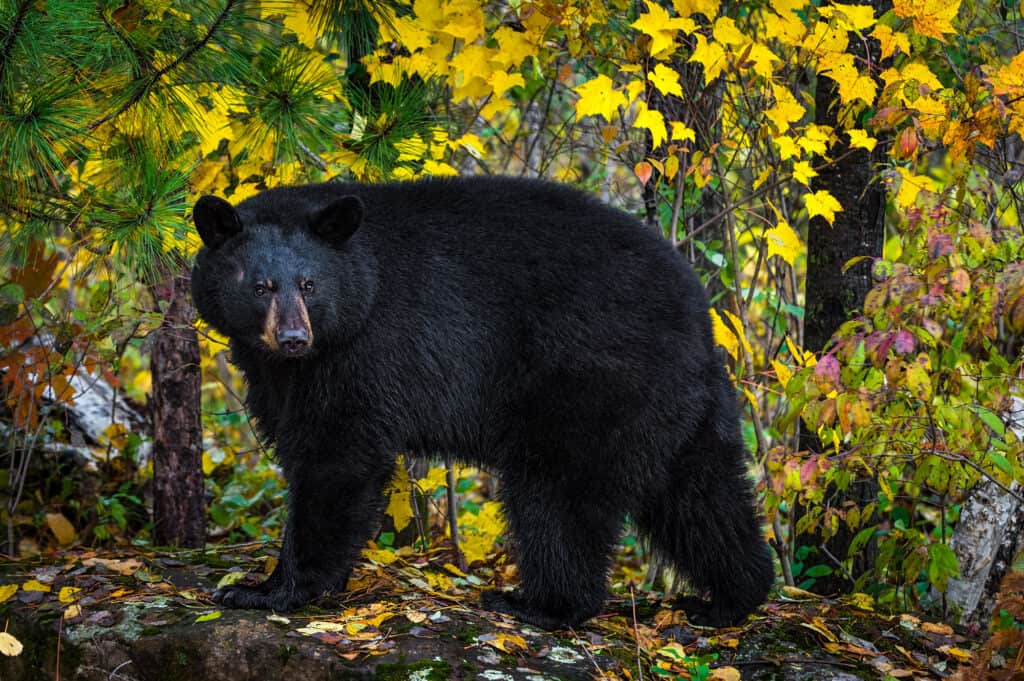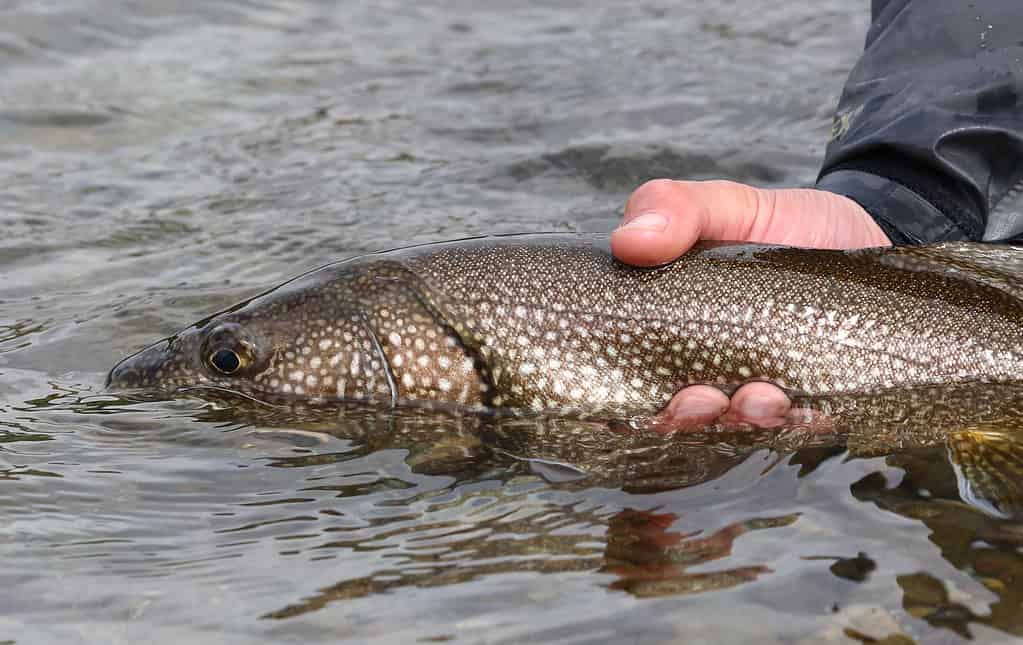
The United States has thousands of lakes scattered across all 50 states, so there are lake getaways for every kind of wanderer. From the world’s largest freshwater lake, Lake Superior, which borders three states and one Canadian province, to North America’s largest alpine lake, stunning Lake Tahoe on the California–Nevada border, to the cleanest lake in the US, Crater Lake in Oregon, America is home to some of the world’s most beautiful and record-setting lakes.
However, not all lakes are made equal; some stand out from the rest. Although Utah’s capital is named after a lake, the state is not well-known for its water features. Nonetheless, the Beehive State’s lakes have great depths. With that in mind, what is the deepest lake in Utah? This article will uncover the deepest lake in Utah and other fascinating facts.
What Is the Deepest Natural Lake in Utah?

With a depth of 208 feet, Bear Lake is the deepest lake in Utah.
©Michele Vacchiano/Shutterstock.com
Bear Lake is Utah’s deepest natural lake, popularly known as the “Caribbean of the Rockies.” It boasts 208 feet of depth!
Bear Lake is a natural freshwater lake in the Bear Lake Valley that straddles the Idaho-Utah border. At an elevation of 5,924 feet, the lake is shared equally between the two states along the east side of the Bear River Mountains and the northeast side of the Wasatch Mountain Range. Bear Lake is just a 2-hour trip from Salt Lake City and is a lake spot that should be on everyone’s travel bucket list! Garden City and Laketown, located on the western and southern shorelines of Bear Lake, respectively, give guests an abundance of options to stay, play, and enjoy an assortment of lake activities on picturesque Bear Lake.
Where Is Bear Lake Located on a Map?
Bear Lake sits astride the border between Idaho and Utah to the northeast of the Great Salt Lake. It is located south of Montpellier in Idaho west of Cokeville in Wyoming.
What Makes Bear Lake So Blue?

Bear Lake is known as the “Caribbean of the Rockies.”
©formulanone / flickr – License
The lake has been dubbed the “Caribbean of the Rockies” because of its striking turquoise-blue color, created by the refraction of calcium carbonate (limestone) deposits suspended in the lake, and it is surrounded by lush nature.
Most locals are familiar with the dazzling turquoise surface of Bear Lake, but very few have seen the lake quite as it looks in a NASA image from space. According to NASA, the lake “caught the eye” of an astronaut on the International Space Station on September 6, 2016. One of the astronaut’s images was published as the Image of the Day on the NASA website on December 11, 2016.
What particularly sticks out in the photo, other than the beautiful hue of the water, are two big white spirals in the center of the lake, which NASA describes as “sediment swirls.” Smaller, less obvious spirals can also be seen on the north end of the lake.

Black bears can sometimes be spotted around Bear Lake.
©Holly Kuchera/Shutterstock.com
Animals around Bear Lake
Wildlife is plentiful around Bear Lake – including the occasional black bear sighting! While the bears tend to stay in the higher elevations, the lake provides the perfect habitat for squirrels, chipmunks, skunks, voles, shrews, cottontail and jackrabbits, badgers, weasels, bobcats, river otters, and raccoons. Red foxes, coyotes, and fleet-footed pronghorns have also been spotted.
The lake is a popular destination for birding enthusiasts and the Bear Lake Refuge is one of the most extensive wetlands in the Rocky Mountains. The wetland is a protected nesting, feeding, and resting area for migrating waterfowl, including ducks, Canada geese, and greater sandhill cranes.
Things to Do at Bear Lake
Water enthusiasts can enjoy a half-mile stretch of beach on the Utah side of Bear Lake with calm, shallow waters for water activities and three miles of rough shoreline on the eastern border at Cisco Beach. Moreover, Cisco Beach is a popular scuba diving location, with a steep drop down close to shore, interesting geological features, and clear deep waters with excellent visibility. The dive site includes a cave, a submerged boat wreck, and the “Car Lot,” an artificial reef composed of dozens of 1930s-era cars.
Sailboats, wakeboards, and jet skis traverse the lake’s calm waters. Over 100 miles of trails surround Bear Lake for hiking, mountain biking, and ATV experiences. Camping is also popular here, so you may spend extended weekends taking advantage of what Bear Lake offers.

Lake trout can be caught at Bear Lake.
©Iryna Harry/Shutterstock.com
Where Is the Best Fishing Spot in Bear Lake?
Cisco Beach is the best location for launching and fishing. Most anglers prefer to fish from boats, but you can also find success at the Bear Lake State Park Marina and along the lake’s east coast at Cisco Beach.
Near Cisco Beach, Rainbow Cove, and the Bear Lake Marina, lake trout and cutthroat trout can be captured using downriggers between 50 and 100 feet with large spoons and Rapalas. Jigging is another popular method once fish have been located using sonar. Some fishermen use Bonneville cisco, or sucker meat, to tip their lures and jigs.
If you want to snag a lake trout on a fly rod, you stand a good chance of doing so from a kick boat during the late fall spawning season.
How Did Bear Lake Form?
Bear Lake is among North America’s oldest lakes, and while the actual age is undetermined, it is believed to be at least 250,000 years old (and some say millions!). Earthquake activity along the eastern Bear Lake fault line caused the Bear Lake Valley to drop, forming a natural freshwater lake.
Bear Lake was not always connected to the Bear River. The Bear River’s flow was channeled into Bear Lake in 1911 via Mud Lake and a canal from Stewart Dam, linking the Bear River to Bear Lake. Today, Bear Lake empties into the Bear River via the Bear River Outlet and feeds into the Great Salt Lake, the western hemisphere’s largest saltwater lake.
What Is the Deepest Artificial Lake in Utah?

Lake Powell is the deepest artificial lake in Utah.
©iStock.com/RAUL RODRIGUEZ
Sitting between Utah and Arizona, Lake Powell is the deepest artificial lake in the state, with a maximum depth of 558 feet.
Lake Powell’s water levels were relatively high in 1999, and the water was a clear, dark blue. Water levels, however, began to drop. The drops were first seen in the reservoir’s side canyons, which thinned and eventually shortened. The lake level had decreased drastically by 2002 and the exposed canyon walls formed a pale outline around the lake.
The photo featured at the top of this post is © formulanone / flickr – License / Original
Sources
- Bear Lake Premier Cabins, Available here: https://bearlakepremiercabins.com/about-bear-lake/
- Wikipedia, Available here: https://en.wikipedia.org/wiki/Bear_Lake_(Idaho%E2%80%93Utah)
Thank you for reading! Have some feedback for us? Contact the AZ Animals editorial team.






